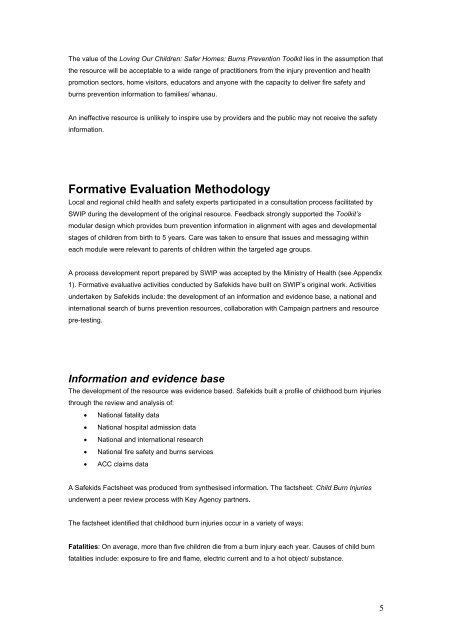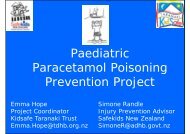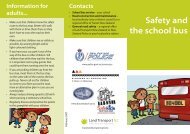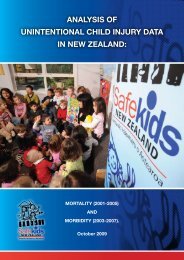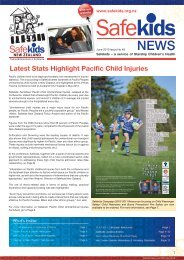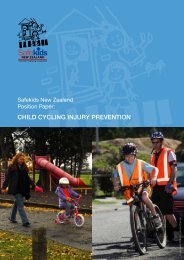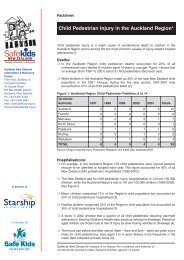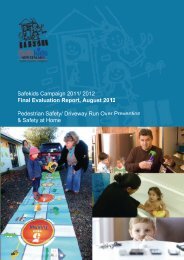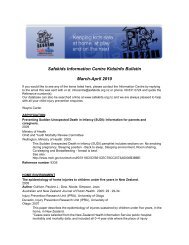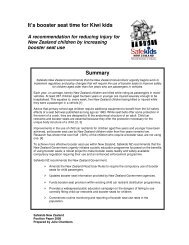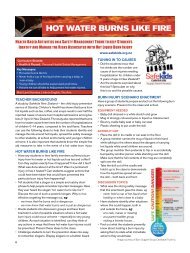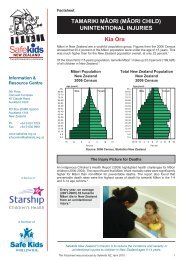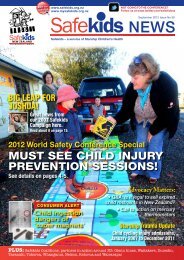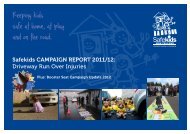Safekids Campaign 2010/11: Fire Safety/ Burns Prevention Contents
Safekids Campaign 2010/11: Fire Safety/ Burns Prevention Contents
Safekids Campaign 2010/11: Fire Safety/ Burns Prevention Contents
Create successful ePaper yourself
Turn your PDF publications into a flip-book with our unique Google optimized e-Paper software.
The value of the Loving Our Children: Safer Homes: <strong>Burns</strong> <strong>Prevention</strong> Toolkit lies in the assumption that<br />
the resource will be acceptable to a wide range of practitioners from the injury prevention and health<br />
promotion sectors, home visitors, educators and anyone with the capacity to deliver fire safety and<br />
burns prevention information to families/ whanau.<br />
An ineffective resource is unlikely to inspire use by providers and the public may not receive the safety<br />
information.<br />
Formative Evaluation Methodology<br />
Local and regional child health and safety experts participated in a consultation process facilitated by<br />
SWIP during the development of the original resource. Feedback strongly supported the Toolkit’s<br />
modular design which provides burn prevention information in alignment with ages and developmental<br />
stages of children from birth to 5 years. Care was taken to ensure that issues and messaging within<br />
each module were relevant to parents of children within the targeted age groups.<br />
A process development report prepared by SWIP was accepted by the Ministry of Health (see Appendix<br />
1). Formative evaluative activities conducted by <strong>Safekids</strong> have built on SWIP’s original work. Activities<br />
undertaken by <strong>Safekids</strong> include: the development of an information and evidence base, a national and<br />
international search of burns prevention resources, collaboration with <strong>Campaign</strong> partners and resource<br />
pre-testing.<br />
Information and evidence base<br />
The development of the resource was evidence based. <strong>Safekids</strong> built a profile of childhood burn injuries<br />
through the review and analysis of:<br />
<br />
<br />
<br />
<br />
<br />
National fatality data<br />
National hospital admission data<br />
National and international research<br />
National fire safety and burns services<br />
ACC claims data<br />
A <strong>Safekids</strong> Factsheet was produced from synthesised information. The factsheet: Child Burn Injuries<br />
underwent a peer review process with Key Agency partners.<br />
The factsheet identified that childhood burn injuries occur in a variety of ways:<br />
Fatalities: On average, more than five children die from a burn injury each year. Causes of child burn<br />
fatalities include: exposure to fire and flame, electric current and to a hot object/ substance.<br />
5


